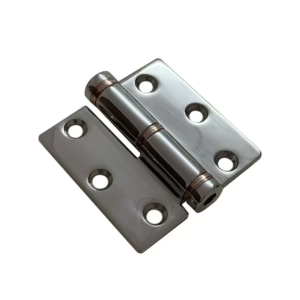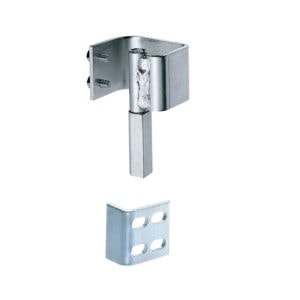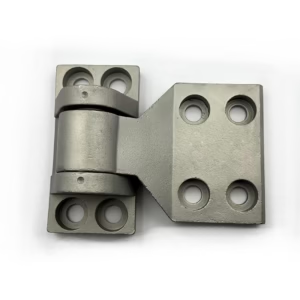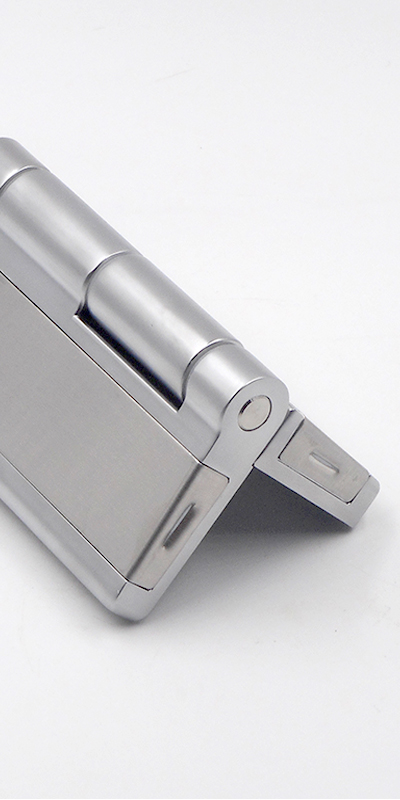Weld-on hinges are indispensable components for industrial doors, panels, and enclosures that demand strength, permanence, and security.
Weld-on hinges are heavy-duty hinges permanently attached to metal surfaces by welding. This method provides superior tamper resistance, long-lasting strength, and minimal maintenance, making them ideal for industrial settings.
These hinges are designed for rugged environments where standard screw-mounted hinges fail.
What Is a Weld-On Hinge?
Weld-on hinges are a type of hinge permanently joined to metal surfaces through welding instead of mechanical fasteners. Unlike screw-in or bolt-on options, these hinges fuse directly to the frame or door surface, creating a solid, unremovable joint that can support substantial weight and endure prolonged industrial use.
A weld-on hinge is a heavy-duty hinge type that is installed by welding directly onto metal surfaces, offering unmatched strength and resistance to tampering or loosening over time.
A Reliable Solution for Permanent Mounting
These hinges are often cylindrical or barrel-shaped, and they lack external fasteners, making them a preferred solution for applications where security and durability are critical. Industries that involve constant door movement or exposure to vibration—like trailers, test chambers, or control boxes—benefit the most from their robustness.
Common variants include plain barrel hinges, bullet hinges, and heavy-duty truck door hinges. Their ability to remain fixed over time with minimal maintenance makes them ideal for industrial and commercial settings.
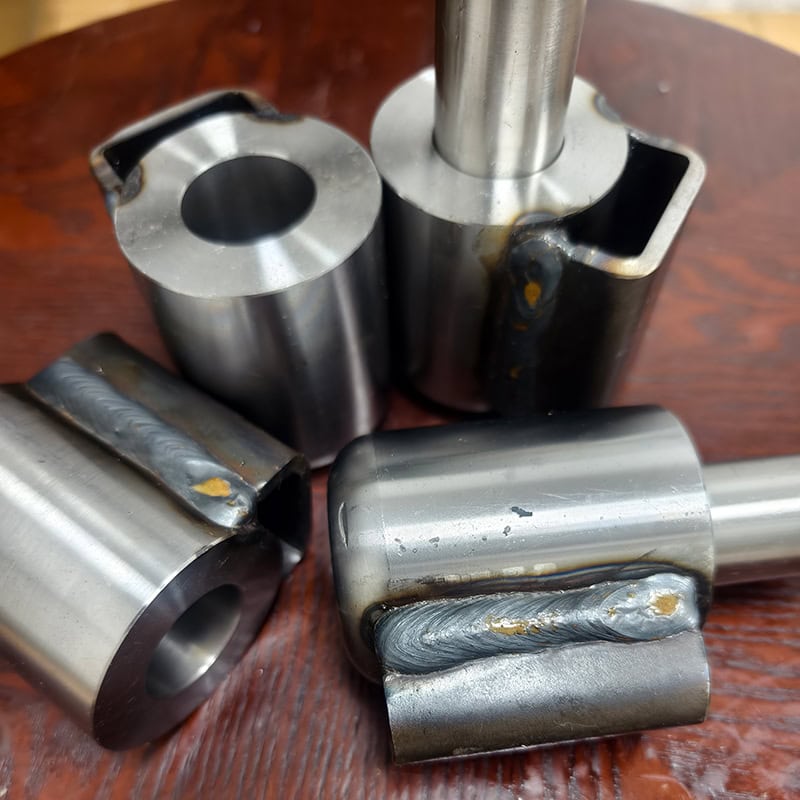
Why Weld-On Hinges Are Ideal for Industrial Equipment
Weld-on hinges are particularly valued in industries where tampering prevention and longevity are priorities. Once installed, the welded joint cannot be dismantled without grinding or cutting, making unauthorized access extremely difficult.
Weld-on hinges are ideal for industrial equipment because they prevent tampering, support high loads, and maintain alignment over time even in high-vibration environments.
Security Meets Endurance
Weld-on hinges are commonly used on metal enclosures, outdoor equipment, and heavy gates. For example, exterior electrical cabinets, server housing, and climate control chambers use these hinges to prevent unauthorized access.
In addition to security, their load-bearing capability is unmatched. They can support large metal doors without sagging, making them essential for machinery housing and trailer doors. A variant like the Heavy Duty Detachable Barrel Hinge even adds flexibility by allowing for periodic removal during maintenance while retaining the benefits of weld-on design.
Key Features: Materials, Finishes, and Types
Industrial weld-on hinges come in a variety of materials and finishes tailored for specific environments. Common base materials include carbon steel, stainless steel, and aluminum, each offering distinct benefits.
Weld-on hinges are available in carbon steel for strength, stainless steel for corrosion resistance, and aluminum for lightweight needs, with finishes like electro-galvanized and black oxide enhancing durability.
Material and Surface Options for Varied Needs
| Material | Features | Typical Applications |
|---|---|---|
| Carbon Steel | High strength, cost-effective | Machinery housing, truck doors |
| Stainless Steel | Corrosion-resistant, aesthetic | Marine environments, outdoor enclosures |
| Aluminum | Lightweight, moderate strength | Portable units, test cabinets |
Finishes such as electro-galvanized and hot-dipped coatings provide additional rust protection, especially in moisture-prone applications. Users may also opt for black oxide or powder coatings for UV protection or aesthetic purposes.
Popular types include bullet hinges, barrel hinges, and wide-throw variants like the Wide-throw hinges, which offer a greater opening arc for larger doors.
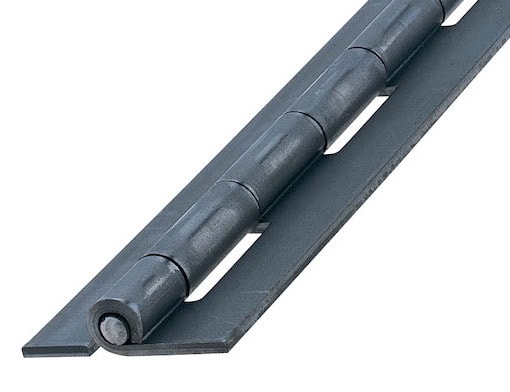
Application Scenarios in Manufacturing and Equipment
Weld-on hinges play a crucial role across manufacturing industries, particularly where security, heavy usage, or environmental resistance is essential. Applications span from test chambers and ovens to cold storage rooms and trailers.
Weld-on hinges are used in equipment like trailer doors, cold storage cabinets, and industrial ovens where high load capacity and permanent installation are required.
Targeted Industrial Uses
In manufacturing plants, weld-on hinges are used on heavy machine doors or inspection panels where bolt-on hinges would loosen over time. For instance:
-
Cold Storage Room Hinges: Must tolerate frequent opening/closing and resist temperature-induced expansion. Cold storage room hinges using stainless steel with internal bearings are common.
-
Trailer Door Hinges: Designed for road vibrations and weather exposure, these hinges often come with grease fittings for maintenance.
-
Outdoor Industrial Hinges: Durable against UV, rain, and corrosion, these are ideal for solar panel enclosures or telecom boxes.
The strength and permanence of weld-on hinges make them irreplaceable for equipment that sees repetitive use and vibration.
How to Choose the Right Weld-On Hinge for Your Project
Choosing the correct weld-on hinge requires evaluating several technical parameters: door weight, material compatibility, frequency of use, and corrosion exposure. Getting these wrong can lead to premature failure or misalignment.
To choose the right weld-on hinge, assess load requirements, materials, surface finish, and optional features like grease fittings or detachment capability.
Choosing Based on Function and Environment
If the equipment is exposed to moisture or chemicals, corrosion-resistant hinges like stainless steel are a must. For high-cycle applications, hinges with internal bearings or bushings reduce wear.
A Take-Apart Hinge or detachable hinge is ideal when regular access or replacement is needed. Similarly, friction hinges in industrial applications allow controlled motion without external dampers—perfect for access panels.
Be sure to evaluate:
| Criteria | Recommendation |
|---|---|
| Environment | Use stainless for corrosion-prone locations |
| Load Capacity | Match hinge to door size and weight |
| Maintenance Access | Choose detachable or greasable variants |
| Installation Surface | Ensure material compatibility with hinge metal |
Suppliers like IHINGES also offer customization such as 3D drawings, logo etching, and finish adjustments to suit OEM needs.
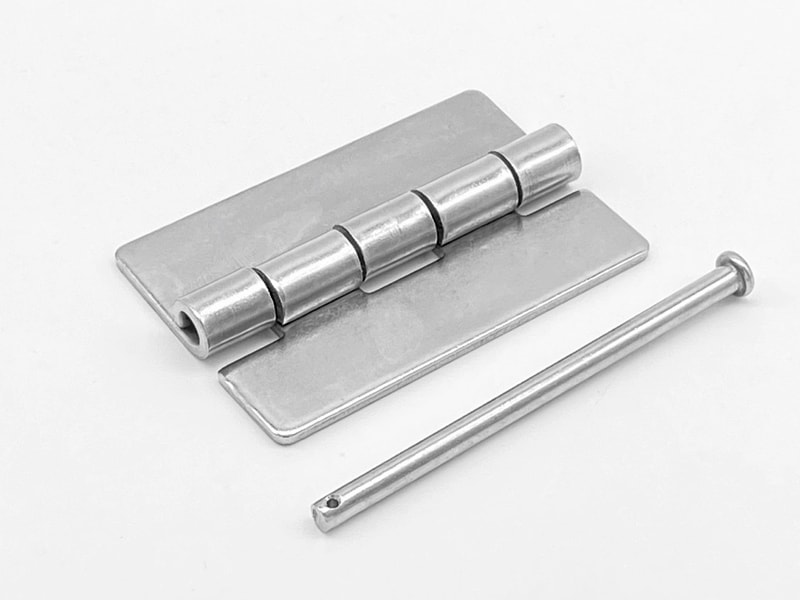
Rust Resistance and Durability Considerations
Corrosion is one of the main threats to hinges in harsh environments. Weld-on hinges must not only resist rust but also maintain mechanical integrity under fluctuating temperatures and exposure to chemicals or water.
Corrosion-resistant weld-on hinges made of stainless steel or coated carbon steel ensure long-term functionality in marine, outdoor, or high-humidity environments.
Materials That Withstand Harsh Conditions
Stainless steel is the gold standard for corrosion resistance, often used in marine hinges and outdoor control boxes. For cost-sensitive projects, carbon steel with a zinc coating or powder-coated finish offers adequate protection.
Hinges should also be rated for environmental cycles. For example, trailer hinges exposed to road salt require higher-grade protection than indoor equipment.
Always confirm:
-
The hinge meets your industry’s corrosion resistance standards.
-
The finish (e.g., powder coating, hot-dip galvanizing) is applied correctly.
-
Lubrication channels are sealed against moisture.
Selecting the wrong hinge for a corrosive environment can lead to rust jamming the pivot point or metal fatigue, which may compromise the entire assembly.
Alternatives: When to Choose Bolt-On Over Weld-On
Although weld-on hinges are favored for permanence and strength, there are cases where bolt-on types are more appropriate. These hinges allow for easier replacement and can be adjusted during installation.
Bolt-on hinges are better suited for applications requiring adjustability, field repair, or installation on non-metal surfaces where welding isn’t feasible.
Comparing the Two Types
| Feature | Weld-On Hinges | Bolt-On Hinges |
|---|---|---|
| Installation | Permanent (welding) | Reversible (screws/bolts) |
| Security | High (tamper-resistant) | Moderate |
| Adjustability | Low | High |
| Maintenance | Low (no loosening) | Requires periodic tightening |
| Material Compatibility | Metal-only surfaces | Works with composites or wood |
For equipment that may be upgraded or reconfigured regularly, bolt-on versions offer the flexibility needed. However, in permanent installations—such as armored enclosures or secure outdoor cabinets—weld-on remains the superior choice.
Conclusion
Weld-on hinges are the optimal choice for industrial applications requiring high strength, tamper resistance, and longevity. Select based on your equipment’s environment and performance demands.

